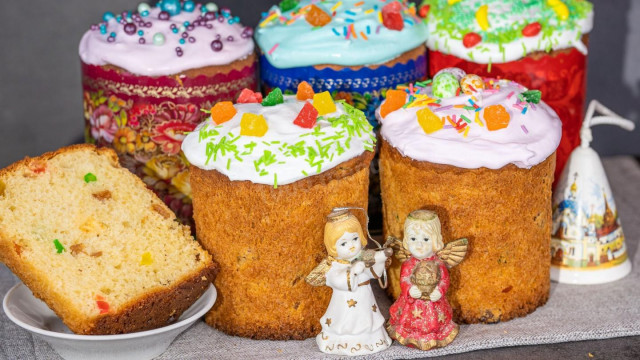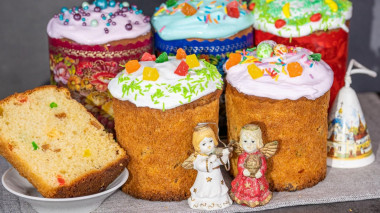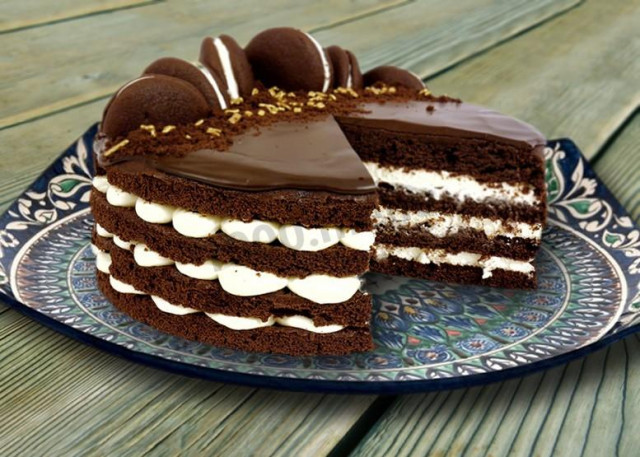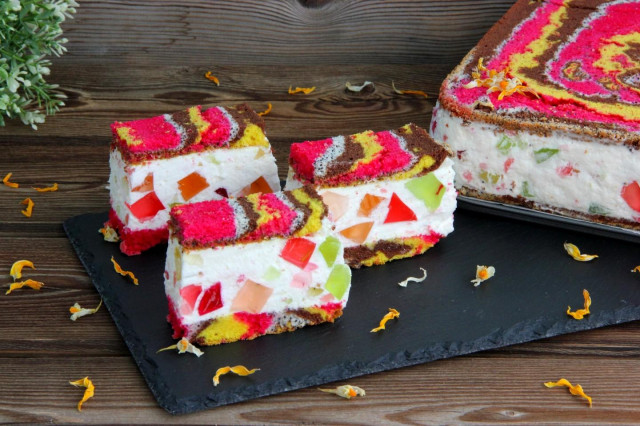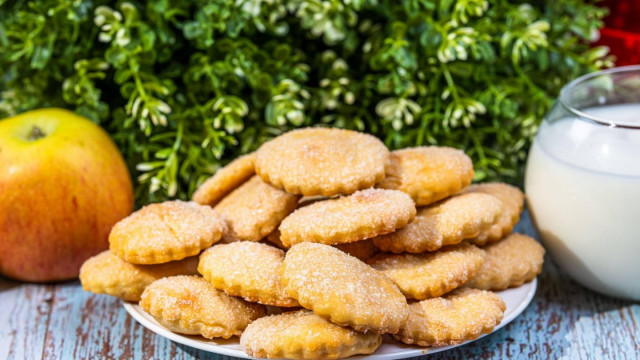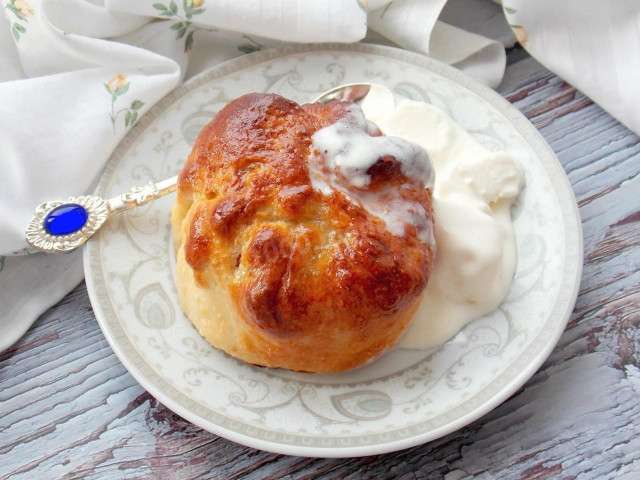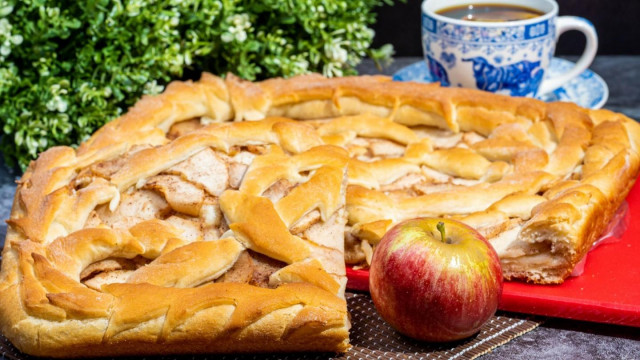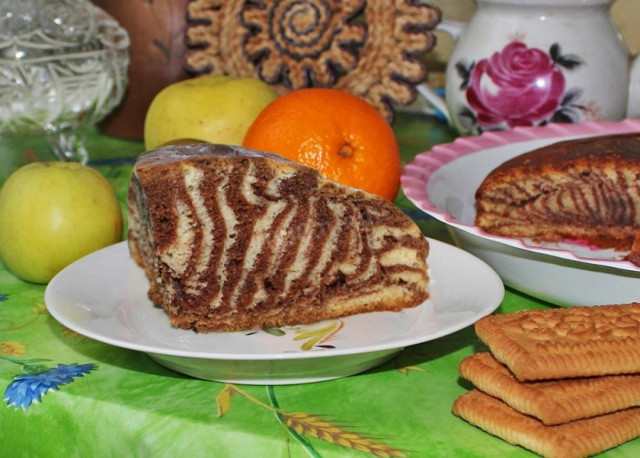Composition / ingredients
Step-by-step cooking
Step 1:
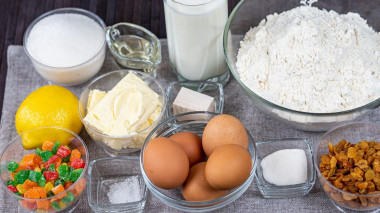
How to make delicious Easter cakes from yeast dough with raisins and candied fruits, which we serve for tea on the festive Easter table? Initially, prepare the products necessary for the preparation of Easter cakes.
Step 2:
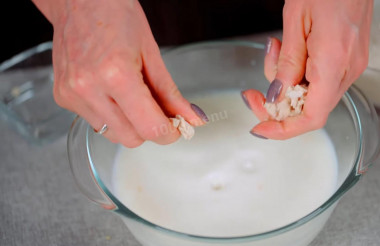
To prepare the sourdough, take a deep bowl and pour three hundred milliliters of milk at room temperature into it, then knead and spread thirty grams of fresh pressed yeast into it.
Step 3:
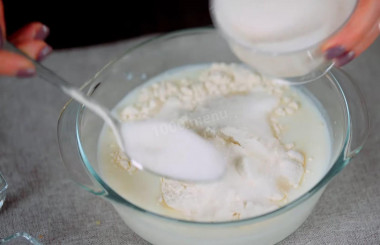
Put three full tablespoons of premium wheat flour from the total mass and two tablespoons of sugar in a common bowl.
Step 4:
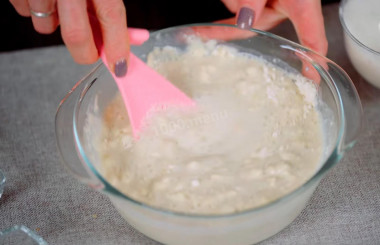
Mix all the ingredients in a bowl together and put the bowl of sourdough in a warm place to activate the yeast for fifteen to twenty minutes.
Step 5:
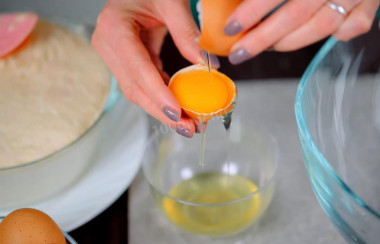
Separate the whites from the yolks of five chicken eggs and put the yolks in a large bowl.
Step 6:
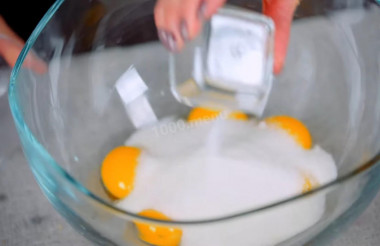
Pour two hundred grams of sugar and ten grams of vanilla sugar into a bowl with egg yolks.
Step 7:
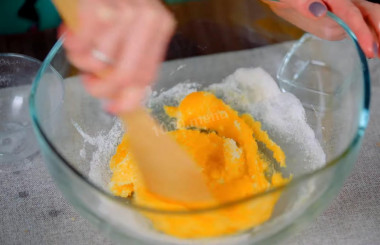
Grind and mix all the ingredients together.
Step 8:
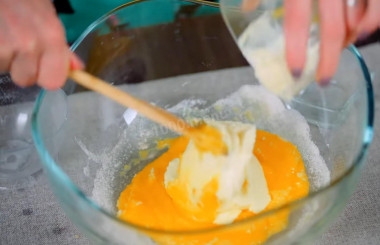
Put one hundred and eighty grams of softened butter in a bowl and mix all the ingredients.
Step 9:
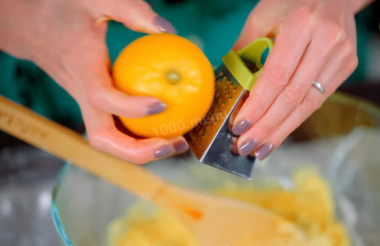
Take a fine grater and rub the zest of one lemon into a bowl.
Step 10:
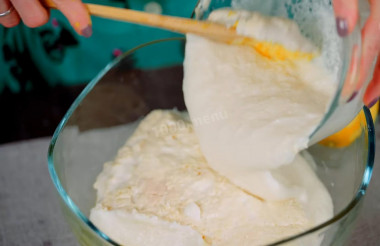
Put the risen sourdough in a common bowl and mix all the ingredients together.
Step 11:
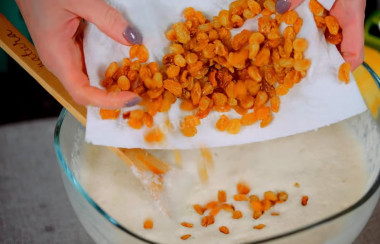
Put one hundred grams of pre-soaked and well-washed raisins in a bowl, then mix all the ingredients.
Step 12:
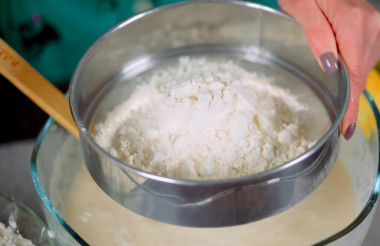
Take a fine sieve and sift six hundred grams of premium wheat flour into a bowl, then add half a teaspoon of salt to the bowl. You may take more or less flour than I do.
Step 13:
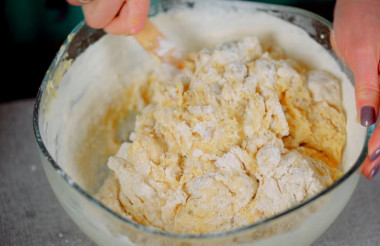
Mix all the ingredients well in a bowl and knead the dough.
Step 14:
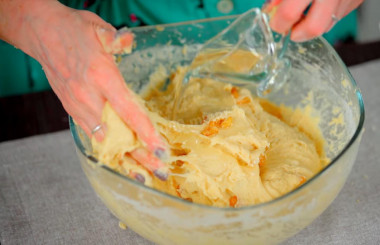
Continue to knead the dough thoroughly in the bowl with your hands for ten minutes, then add two tablespoons of vegetable oil to the bowl.
Step 15:
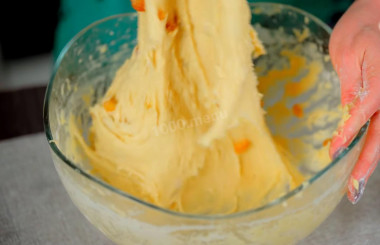
Knead the dough in a bowl to the desired consistency for about four more minutes.
Step 16:
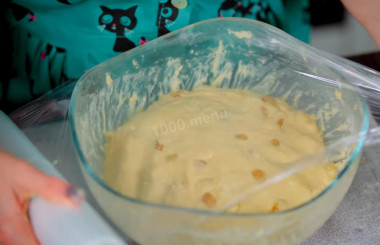
Grease the dough in a bowl with a small amount of vegetable oil, then cover the bowl with the dough with cling film and put it in the refrigerator for eight to ten hours.
Step 17:
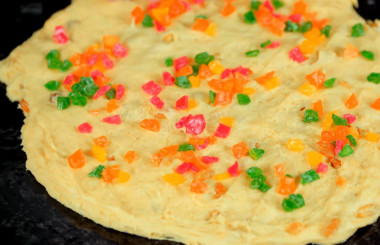
After a while, lubricate the table with a small amount of vegetable oil and spread the dough, which is allowed to lie down for two hours, then mash the dough to a flat cake and spread on it a uniform layer of one hundred grams of candied fruits, which are then pressed into the dough.
Step 18:
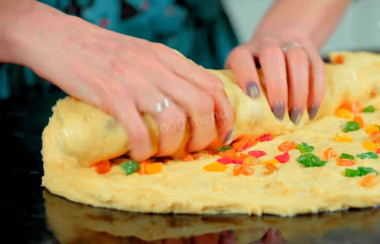
Roll the flatbread with candied fruits and raisins into a tight roll.
Step 19:
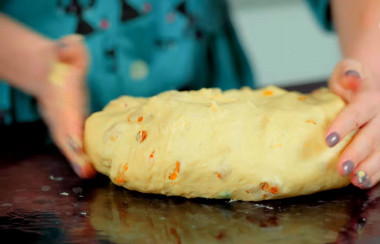
Collect and knead the dough well for about two minutes.
Step 20:
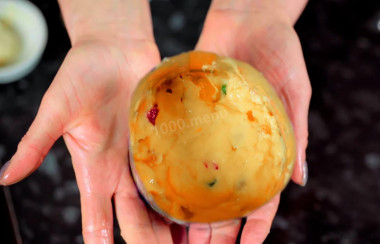
Lubricate the molds suitable in size with a small amount of butter and fill them with one-third of the prepared dough, which is then pressed on top and put them on a baking sheet, which is then removed to a warm place for proofing.
Step 21:
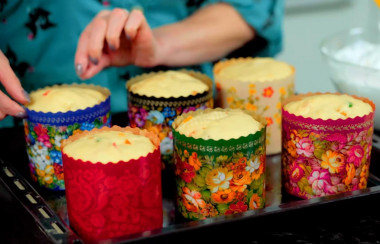
After one hour, put the baking sheet with the cakes in a preheated oven to one hundred and seventy-five degrees.
Step 22:
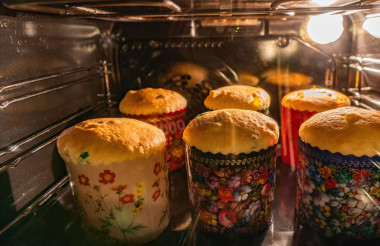
Bake the cakes in the oven until fully cooked for thirty-five to forty minutes. Determine the exact time and temperature of baking according to your oven.
Step 23:
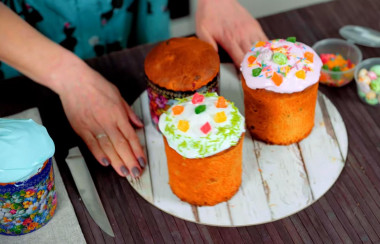
After a while, spread the necessary amount of cooked protein custard on top of the cakes and decorate with candied fruits with confectionery sprinkles to taste.
Step 24:
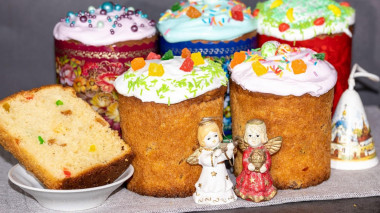
Cooking together, cooking simply, cooking at home the most delicious dishes from available products according to our recipes! Bon appetit and a hearty tea party for everyone!
Prepare fragrant and delicious Easter cakes from yeast dough for the festive Easter table according to a repeatedly proven recipe. Easter is a great Christian holiday in honor of the Resurrection of Jesus Christ, when perfect pastries from perfectly cooked dough are served on the table. The right dough for Easter cakes is the key to a successful and delicious final result. In Orthodoxy, the status of Easter as the main holiday is reflected by the words "holidays are a holiday and a celebration of celebrations" Bon appetit!
Be prepared for the fact that flour may need more or less than indicated in the recipe. Focus not on the amount of flour, but on the desired consistency of the dough. To avoid mistakes, read about flour and its properties!
Keep in mind that everyone's ovens are different. The temperature and cooking time may differ from those specified in the recipe. To make any baked dish successful, use useful information about the features of ovens !
Caloric content of the products possible in the composition of the dish
- Whole cow's milk - 68 kcal/100g
- Milk 3.5% fat content - 64 kcal/100g
- Milk 3.2% fat content - 60 kcal/100g
- Milk 1.5% fat content - 47 kcal/100g
- Concentrated milk 7.5% fat content - 140 kcal/100g
- Milk 2.5% fat content - 54 kcal/100g
- Lemon - 16 kcal/100g
- Lemon zest - 47 kcal/100g
- Granulated sugar - 398 kcal/100g
- Sugar - 398 kcal/100g
- Butter 82% - 734 kcal/100g
- Amateur unsalted butter - 709 kcal/100g
- Unsalted peasant butter - 661 kcal/100g
- Peasant salted butter - 652 kcal/100g
- Melted butter - 869 kcal/100g
- Raisins - 280 kcal/100g
- Kishmish - 279 kcal/100g
- Vegetable oil - 873 kcal/100g
- Salt - 0 kcal/100g
- Wheat flour - 325 kcal/100g
- Vanilla sugar - 379 kcal/100g
- Chicken egg - 80 kcal/100g
- Confectionery sprinkles - 395 kcal/100g
- Candied fruit mixture - 216 kcal/100g
- Custard - 212 kcal/100g
- Fresh yeast - 109 kcal/100g

